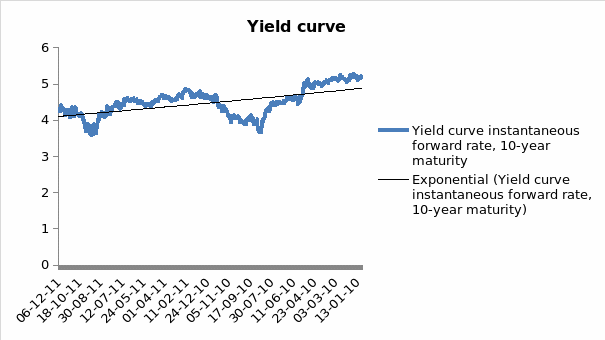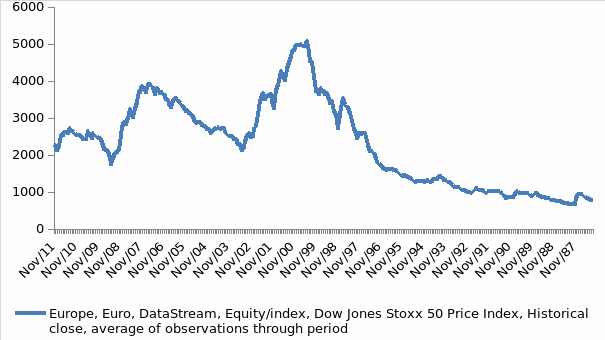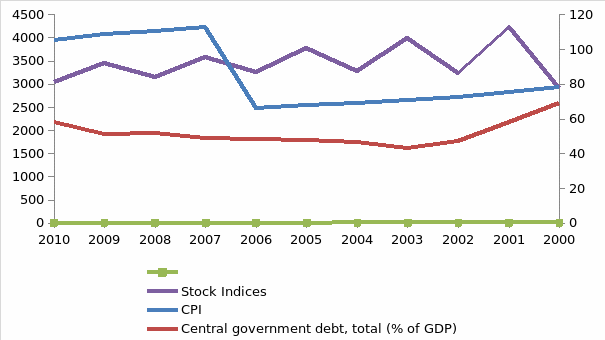Introduction
The fear of the Euro plunging into dilution had gripped the financial world completely. The developed economies in Europe Union (EU) failed to raise money for their bonds due to a decline in the confidence of the international financial market on euro zone. EU’s debt crisis worsened further since 2010, as countries like Spain, Italy, and Greece defaulted on their debts.
This crisis has serious implications on the future of EU’s monetary market. In order to understand the future shape of EU monetary market, it is necessary to ascertain the reasons that led to the debt crisis initially. The aim of the paper is to understand the future of the money market in EU in 2012 and the factors that would affect it. The first part of the paper enumerate the cause of the debt crisis in EU, especially Greece, Portugal, Spain, and Ireland and then look at the trend in policy changes in the money market in EU and how they are expected to affect the market in 2012.
What Started the Crisis?
Central government debt in EU as a ratio of GDP has been increasing since 2008 through 2010. The highest debt GDP ratio was of Greece and Italy. Table 1 represents the central government debt of EU and four of the crisis-ridden countries from 2000 to 2010. The data shows that the external debt of the central governments of these countries has been considerably higher than the EU average. The crisis actually originated in the banking sector, especially in Spain and Ireland, where the government bailed out private banks by buying the private debts. Consequently, the governments of these countries became the debtors of the foreign investors.
Table 1: Central Government Debt as percentage of GDP, Source: (World Bank)
The government debt ratio as percentage of GDP was much higher post 2009, when the crisis actually began. The analysis shows that the debt ratio crisis in Greece and Portugal are separate from that in Spain and Ireland. In the former two countries the crisis occurred due to the trend the government was following in framing its budgetary policy were it was the structural debt that actually led to the debt burden in Greece and Portugal (Stein). Therefore, their effect on the future money market in EU may be different. The question this report tries to address is what is the future of the money market in EU in 2012?
Future of Money Market in EU
The reasons for the increase in debt burden of the four countries analyzed in the previous section bring forth two reasons:
- Structural debt led to increased spending that led to increase in debt burden of the country.
- Bad debt of banks was transferred to the countries through bail out loans and the country became the defaulter.
The bond yields for 10 year, 3 year, and 1 year are believed to be increasing. The bond yields for 10-year maturity when plotted in figure 1 show the yield of the company. a trend line drawn on the original plot of the yield curve shows that in the short run there is expected an increase in the yield curv3.

The stock market is expected to show further downfall with increasing debt burden. The stock price indices in Europe has shown a downward plunge and from the graph (figure 2) shown below the trend is expected to continue. This would lead to low investor confidence on the market.

The Euro is expected to weaken as compared to the US dollar has been decreasing, as Euro has been weakening due to the increasing debt crisis in the union. The lower confidence in the EU market has led to the lower of 1.31 exchange rates. The Euro has been weakening and the reason has been the financial market crisis. The exchange rate would continue to fall if no steps are taken to meet the present financial crisis. The money growth in the national stocks has been declining indicating less money is being pumped in the economy indicating a liquidity crunch (European Central Bank). In 2010, the growth rate of money market interest rates in EU has been lowest since 1999 at 0.34% and it has been continually declining (European Central Bank). The money market interest has been historically low at 0.44, with highest ever bond yield for 10-year bonds at 2.43, and lowest stock market indices in 2010 (European Central Bank). This definitely demonstrates a bleak money market scenario in 2012.

The money market indicators that are shown in figure 3 shows the stock price indices in Europe, the consumer price index (CPI), and the central government debt. The central government debt is expected to increase due to the increasing trend it has followed so far. As central government debt is increasing, there is a chance that the downfall in the stock indices. A fall in stock indices would imply that the market is losing confidence of investors.
The problem that initiated from Greece has extended to other EU economies. As the crisis intensified, there has been an acute widening of the spread of bonds in the EU and rapid sell-off of stocks globally. In order to reduce the growing debt burden and pressure from international financial market on Greece, the EU forwarded a €110 billion loan to save the country. This was intended as a symbolic signal to the internal financial markets that the EU would safeguard any debt crisis on its member nations. However, by end of November 2010 Ireland too had to resort to a loan of €85 billion from the union followed by Portugal and Spain. Nevertheless, apparently this is much more than the EU had initially planned for and therefore, there is a need to devise ways to make changes in the monetary policy of the country so that such crisis could be avoided in future.
A fear of Euro collapsing completely due to the debt crisis was imminent since a few developed economies, like Italy, joined the bandwagon for debt relief loan. The creditworthiness of developed countries like Germany also declined considerably. Even with a bailout assurance to all EU nations, market sentiment remained bullish regarding EU nations. In such a situation, what could be the condition of the money market in EU in 2012? The answer is not hard to guess. The EU economy so far has not pumped in new money at the cost of increasing already rising inflation in the union. Unlike the US Federal Reserve Bank or Bank of England, ECB has abstained from printing money, as it would eventually lead to inflation that moves again the objectives of combating inflation that the EU treaty that created the Euro safeguards.
The only solution to this problem is to increase the money supply in the union by printing it. However, it would increase inflation, but no other measure would be able to bail out the economy and solving one problem would bring another. Another measure that the financial world is speculating about is that the governments of EU would increase corporate taxes in order to bring in more money from the private sector from which the debt crisis initially started. This apparently is a good idea as this would reduce the burden of the government and the common taxpayers too do not have to take extra burden. However, this would eventually increase prices in the market, pushing up inflation. This inflation would be caused due to dampening of consumer demand and therefore increasing cost for the private sector. This would in turn intensify the problem. The money market in 2012 in EU will remain unstable, unless the leaders in near future take some drastic measures. The debt crisis would increase further if EU fails to insure against credit defaults and increase confidence in EU bonds. The money market, therefore, is expected to remain weak in 2012 in EU.
Works Cited
European Central Bank. Statistical Data Warehouse. 2011. Web.
Stein, Jerome L. “Diversity of Debt Crisis in Europe.” Cato Journal, 31(2) (2011): 199-215. Print.
World Bank. World Databank. 2011. Web.
